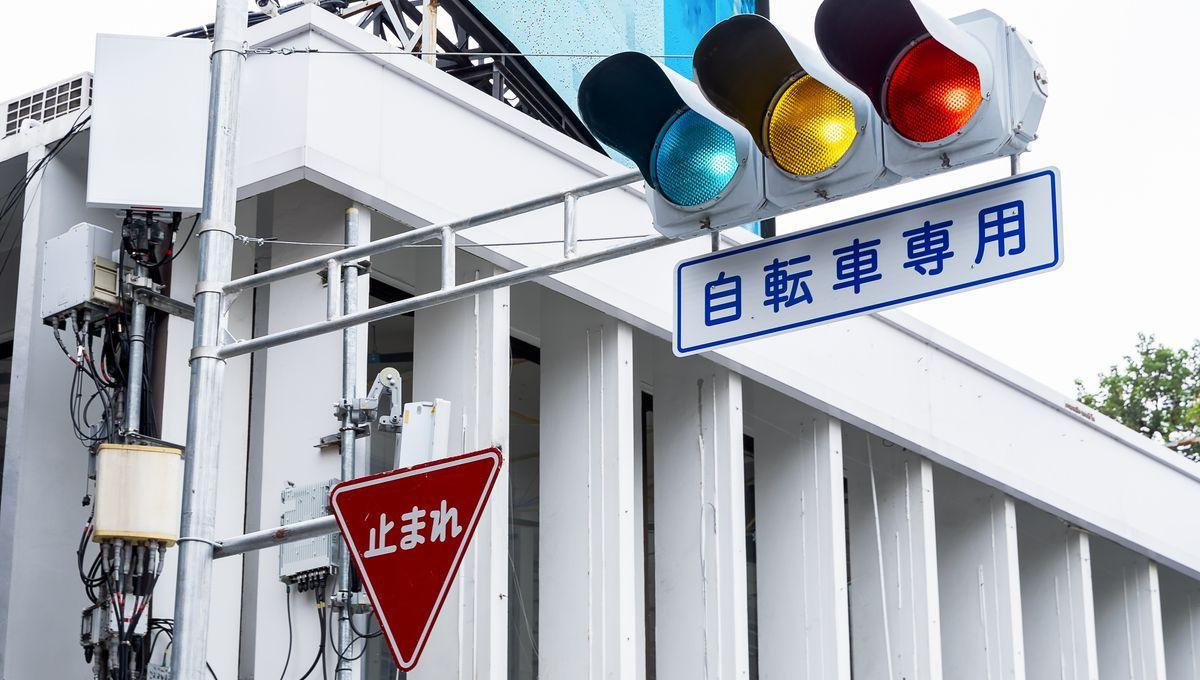Green = go, red = stop is a universal code that is burned into our brains and understood almost instinctively, no matter the language or culture. Except, of course, in Japan. A country known for its distinctive traditions and cultural quirks, Japan has a difficult relationship with the color green, a peculiarity that reveals itself in the curious blue-green hue of some of its traffic lights.
Many traffic lights in Japan will follow the globally accepted rule: red for stop, amber for caution, and green for go. This global standard was a major part of a United Nations treaty signed in 1968, known as the Vienna Convention on Road Signs and Signals – sounds riveting! While dozens of countries have ratified the agreement, Japan (and, by the way, the United States) remains a notable exception. This is why the Land of the Rising Sun has very different road signs from the rest of the world, much to the annoyance and confusion of tourists. The deviation from international standards is best emphasized in the blue-tinged traffic lights that occasionally, but not always, adorn Japanese roads. Not all traffic lights in Japan are icy blue, but it's common enough to confuse travelers. Image credit: Take Photo/Shutterstock.com The reason behind the unusual traffic light color is closely associated with language. In Classical Japanese, the word to denote blue (ao) is interchangeable with the term to denote green and cyan. It was effectively felt there was little need to distinguish between the colors, and they were grouped together as variations of the same hue. It’s comparable to how, in English, we use the word “pink” to describe a whole range of shades, from pale rose to hot magenta, even though they differ significantly. The finer distinctions exist, but they’re often blanketed under a single subjective label. While modern Japanese does have a separate word to strictly denote green (midori), the distinction between green and blue is not very pronounced in the broader culture. Even today, Japanese people will regularly refer to green traffic lights as ao, or blue. The same applies in other contexts as well, such as describing "blue apples" (aoringo) and "blue mountains" (aoyama). The hazy distinction between blue and green became a point of cultural pride in Japan. When the government set official standards for traffic lights in 1973, they chose the green shade closest to blue. In some parts of the country, especially those with older traffic light systems, the “go” signal pushes the envelope even further and appears an icy turquoise (at least to foreign eyes). This blurred boundary between green and blue isn’t as alien as it might seem. There’s a viral online quiz, called ismy.blue, that presents users with a spectrum of colors and asks them to decide whether they believe it's green or blue. The results reveal just how differently people perceive where green ends and blue begins. It turns out we all have a slightly different sense of turquoise, teal, cyan, and everything in between, even if we share the same mother tongue. And if you’re wondering about the ancient Greeks: yes, contrary to popular myth, they did have words to describe blue, but that’s a whole other rabbit hole.





